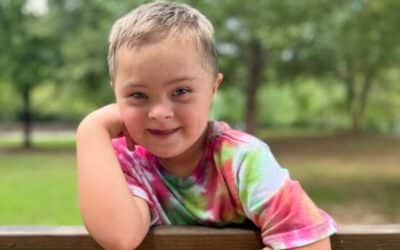As a parent, you may eagerly anticipate your child’s first words. However, before these words take form, there’s a rich tapestry of non-verbal communication unfolding through gestures. Their significance in nurturing a child’s communication growth cannot be overstated. In this article, we will answer the question, “Are gestures important for communication development?” We will also provide insights into how parents can leverage gestures to enrich their child’s speech, language, and communication development.
The Central Role of Gestures in Communication Development
Gestures as Building Blocks for Language
Gestures act as foundational pillars for language. Even before uttering their first words, babies reach, point, wave, turn away, shake their head, and make other body movements to communicate. These gestures are the initial steps towards understanding and using language and communication.

Augmenting Expression and Reducing Frustration
Children who haven’t yet mastered speech can convey their feelings and needs through gestures. This reduces potential frustration from being unable to communicate their desires verbally.
Gestures as Precursors to Richer Language Use
Gestures often precede and predict future language development. For instance, a child who often uses a specific gesture for an object or action may soon start using words or phrases related to that gesture.
The Power of Parental Modeling

Lead by Example
Children are instinctive imitators. By using gestures regularly, parents can model effective non-verbal communication. For instance, pointing to an object while naming it can help a child earn to associate a word with its meaning.
Encourage and Acknowledge Your Child’s Gestures
When your child uses a gesture, respond to it verbally. If they point at a toy, say, “Do you want the ____?” This encourages them and reinforces their use of gestures as communication tools.

Make it Fun!
Incorporate gestures in play. Playing peek-a-boo, for example, teaches babies the concept of disappearance and return, reinforced by the hiding and uncovering gesture. It also helps them learn to understand and say, “boo.”
Clapping helps children to have a way to express excitement and celebrate their accomplishments.
Nurturing Gesture Development in Everyday Routines
Talk and Use Gesture Together
When reading or storytelling, use associated gestures or sign language to teach or emphasize words or actions. This not only makes the story more engaging but also reinforces word-gesture associations and word meaning.
Use Sign Language Basics
Teaching simple sign language signs like “eat”, “more”, or “sleep” can give your child a head start in communicating their needs long before their mouths man be ready to say those words.
Introduce Gestures in Routines
Whether it’s waving goodbye when leaving or clapping after a small achievement, incorporating gestures into daily routines helps normalize, encourage, and reinforce their use and a means to communicate.
FAQs
- Can gestures delay my child’s speech?
No, gestures complement speech and often act as a precursor to verbal communication. - How do gestures and speech development relate?
Gestures often precede speech, helping children convey their thoughts before they can express the words. - How can I, as a parent, promote gesture use?
Model gestures, promptly respond to your child’s gestures, and integrate gestures into daily routines and play. - Do gestures have a role in cognitive development?
Yes, gestures can enhance cognitive processes, helping with memory, attention, language, and learning. - Is it beneficial to teach my child sign language?
Absolutely! Sign language can aid communication before verbal speech develops and can coexist with spoken language.
Additional Resources
- About 16by16 – First Words Project
- Gesture’s role in speaking, learning, and creating language – PMC (nih.gov)
- MORE Gesture Intervention – CEC-RAP Center (fsu.edu)
Summary/Conclusion
Gestures play an indispensable role in a child’s journey to effective communication. As parents, modeling, responding to, and interpreting gestures can positively and profoundly impact a child’s speech, language, and communication development. Remember, every point, wave, and clap bring your child one step closer to the world of words and conversations.




0 Comments